Could the British Royal Family Have Saved the Romanovs?

"Hearst Magazines and Yahoo may earn commission or revenue on some items through the links below."
Season five, episode six of The Crown, “Ipatiev House,” focuses on the relationship between the British royal family and the Romanovs. In light of the episode, we're resurfacing our 2020 feature on the true story of whether King George V could have saved Russia's last imperial family.
Two families sat down to dinner aboard the yacht Victoria and Albert on August 2nd, 1909, to be served an exquisitely prepared meal: cold quail, timbales of pear, and glace. The table, set for 44 guests, was dotted with vases of red roses. Such a presentation was only to be expected.
Not one but two crowned monarchs were dining that evening: England’s King Edward VII and his nephew, Russia’s Czar Nicholas II. It was a seismic summit. The British Empire held sway over some 400 million people; Nicholas ruled one-sixth of the world. But it was also a deeply personal event.
That very morning, the Russian Imperial family—41-year-old Nicholas, his wife, 37-year-old Czarina Alexandra, and five children, ranging from 13-year-old Olga to the 5-year-old Tsarevich Alexei—had arrived at the rendezvous off the Isle of Wight on their own yacht, the Standart.
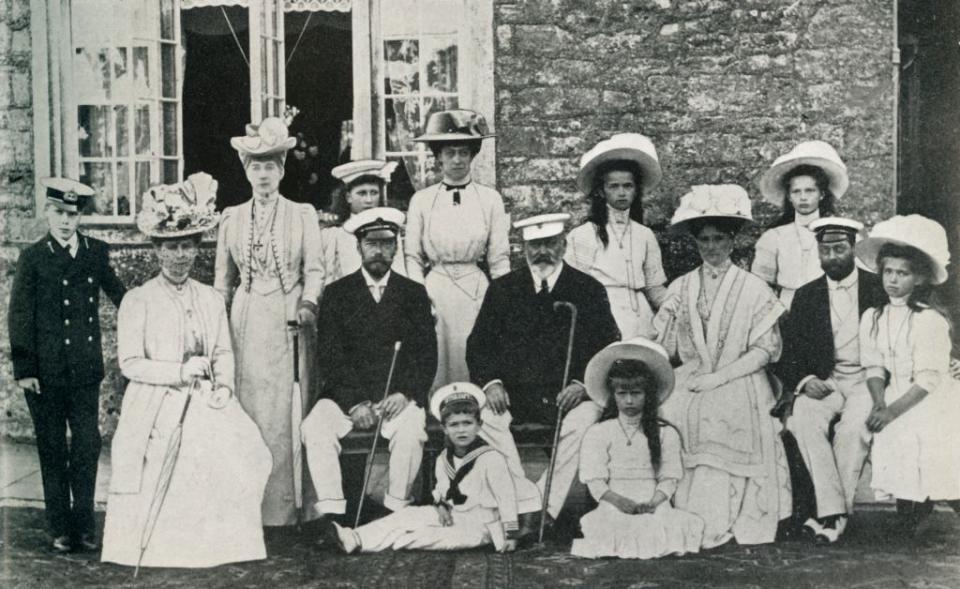
The two families were intertwined twice by blood: Nicholas’s Danish mother, Marie, was the sister of Edward’s wife, Queen Alexandra, while Czarina Alexandra's mother was the favorite granddaughter of Queen Victoria, King Edward's mother.
The four-day visit was far from the first meeting of these two royal families. For a generation, various members had gathered in England, Russia, Germany, and Denmark for weddings and funerals and summer holidays, just like any other set of relatives. But this was to be the last such coming together of the two full groups.
The Romanovs’ 1909 journey, when they all made a point of going ashore to the Isle of Wight to see Queen Victoria’s once-beloved Osborne House, took place towards the end of the Edwardian Long Summer, a time marked by leisurely teas and emerald-lawn garden parties and novels by E.M. Forster. But storm clouds were gathering on this summer visit. In addition to growing tensions within their respective countries, Russia, Edward VII and Nicholas II did not have the easiest relationship.
The 1909 meeting was not purely personal—it was also designed to solidify an alliance. In the early part of his reign, despite family ties Nicolas thought of England as Russia’s sworn enemy. It was only after years of diplomatic courting that Russia signed an agreement allying itself with England. The real reason the two families had to meet at the Isle of Wight, two miles off the coast, was the security nightmare presented by the Romanovs–the autocrat czar was hunted by assassins in Russia and across Europe.
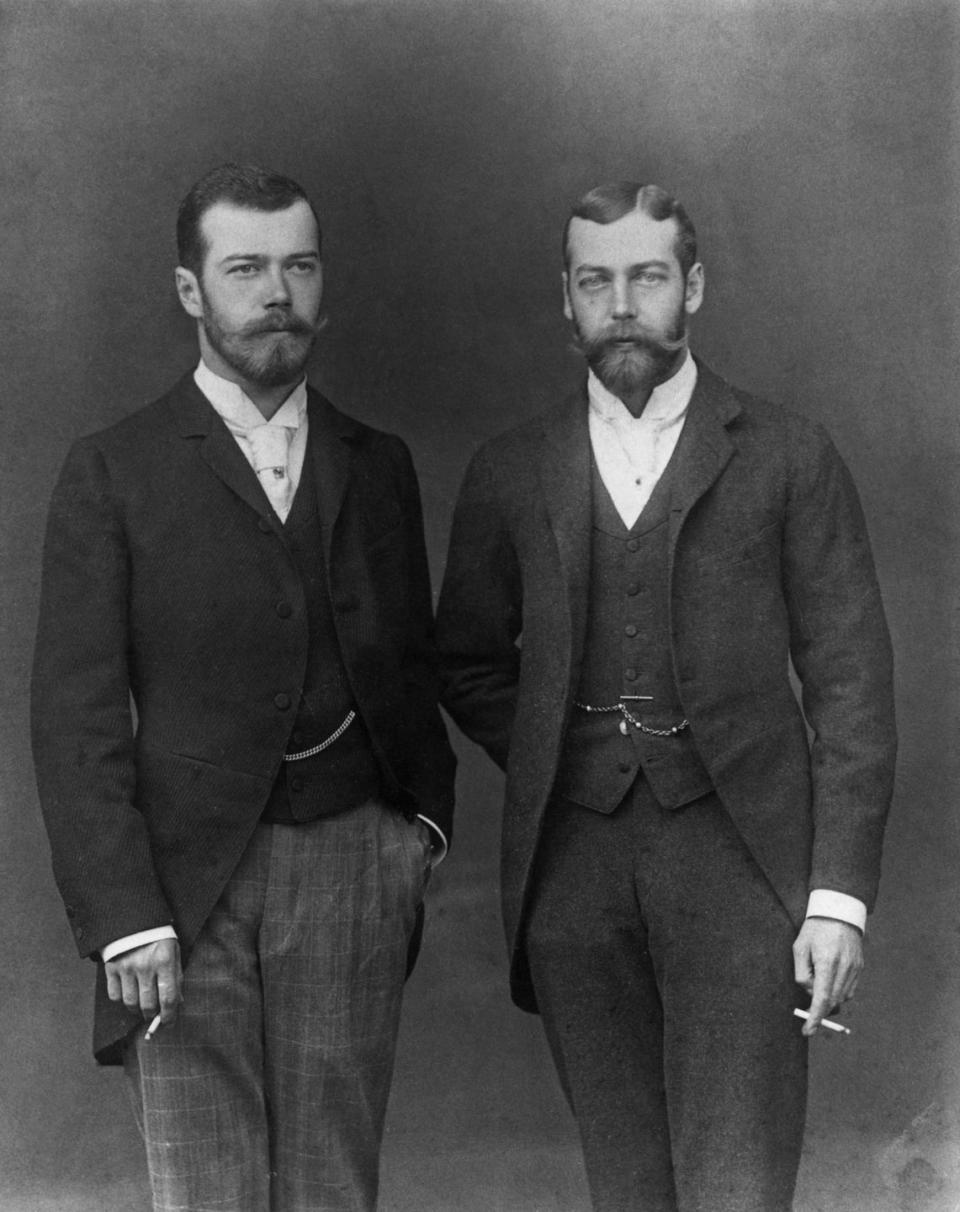
The underlying tensions that evening, though, went well beyond politics. “Weak as water” was the private opinion Edward VII held of his nephew, while the shy and reserved Nicholas felt that the gregarious King Edward patronized him. At the very least, Edward came on too strong. “Uncle Bertie is in very good spirits and very friendly, almost too much so,” Nicholas once complained in a letter to his mother, the Dowager Czarina Marie.
Nicholas did, however, enjoy a genuine friendship with Edward’s son and heir, George, who was close in age. "I look upon you... as one of my oldest and best friends," George wrote Nicholas in 1894.
Not only did the two men share many interests; they were eerily similar in appearance. Standing side by side, the first cousins could be mistaken for twins—five foot seven inches tall, they sported dark trimmed mustaches and van dyke beards. “Nickie” and “Georgie” jokingly commemorated their resemblance on the Isle of Wight, photographed side by side and arm in arm, wearing yachting suits.
The harrowing tragedies and trials of the coming century were unforeseeable when the Standart arrived on that breezy, cloudy morning at the Isle of Wight, escorted by Russian cruisers and greeted by bands playing and crowds cheering on the shore. Prince George, arriving with his parents on the Victoria and Albert, brought his wife, Mary of Teck, their daughter, Mary, and their oldest son, 15-year-old David. The future Duke of Windsor thought that the second oldest daughter of Nicholas, Grand Duchess Tatiana, was pretty, leading to a series of tantalizing “What Ifs.”
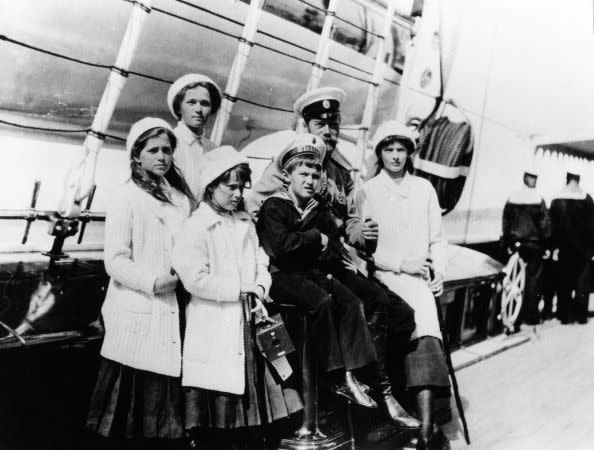
Nicholas and Alexandra had visited Balmoral in 1896 with baby Olga, but this was the first visit to England by all five Romanov children. The daughters were photographed wearing their favorite white dresses and large hats. On the second day, Olga, Tatiana, Maria, and Anastasia were determined to go to the island, and would not take no for an answer.
Completely cut off from the “ordinary” world in their heavily guarded St. Petersburg palace of Tsarkoe Selo, the girls took pleasure in digging for shells and building sandcastles on the beach. Trailed by anxious detectives, the two oldest, Olga and Tatiana, even ventured into the town of Cowes, buying postcards and trinkets in local shops. Everyone found them “modest and charming,” wrote Helen Rapaport in her book The Race to Save the Romanovs.
Such down-to-earth delights were not to be enjoyed by their mother, the Czarina Alexandra, who had a bad headache on and off during the visit, and also suffered from a “weak heart.” But perhaps her greatest source of discomfort was her nerves. The Czarina was obsessed with worry for her son Alexei, who had hemophilia, a hereditary blood disease–one of Queen Victoria’s sons had died of it at age 30 and various grandchildren exhibited the illness, which caused excruciating pain.
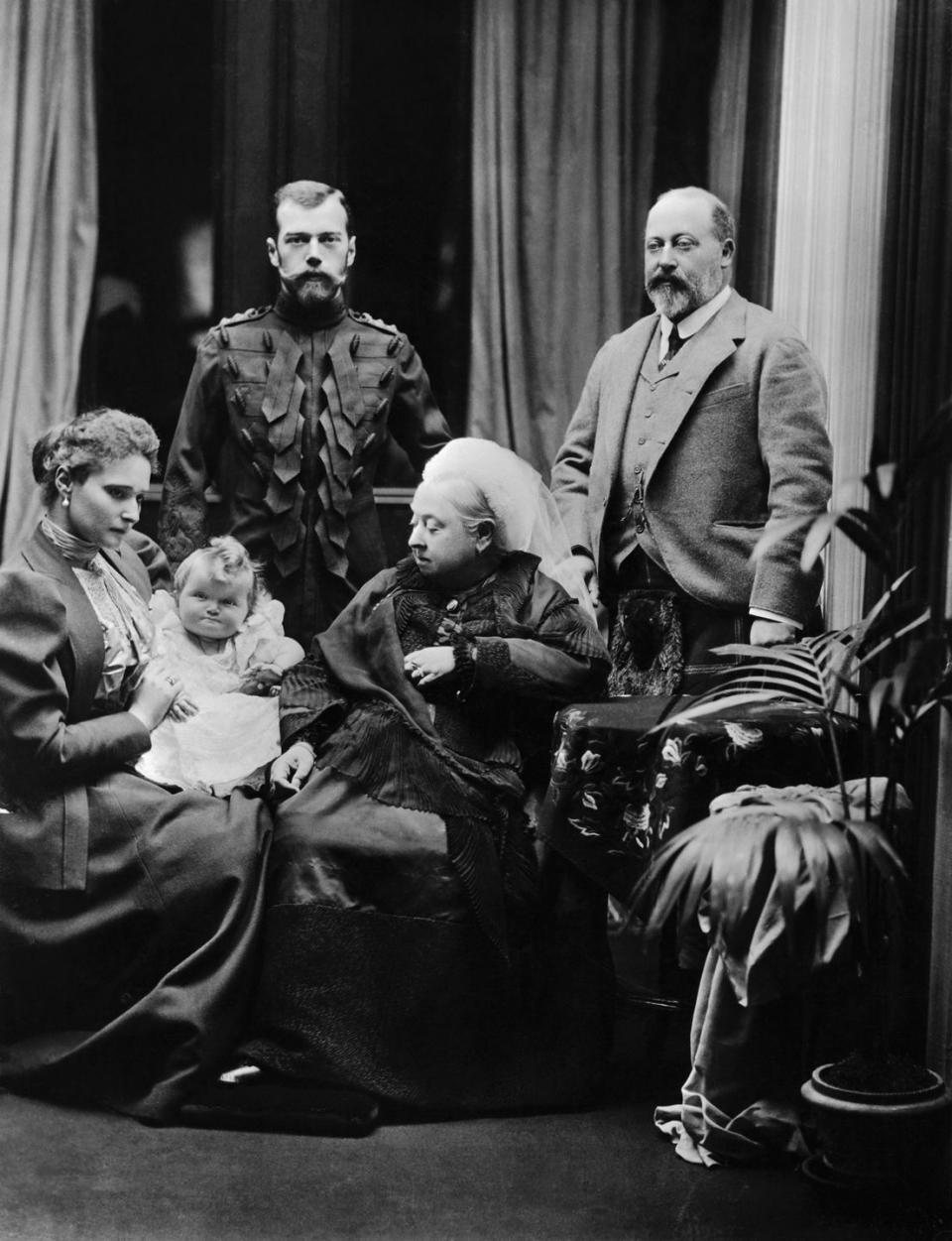
Back in Russia, the devout Alexandra had already come under the influence of the monk Grigori Rasputin, a “holy man” who alone seemed able to bring Alexei relief when he was in an acute phase. Some historians have theorized that Rasputin, with his hypnotic voice, could calm the overwrought Czarina, which eased the tension suffered by her dependent son and thus reduced his pain.
Nicholas and Alexandra were keeping Alexei’s hemophilia a secret from everyone outside the immediate family, including their English relatives. The extended family were puzzled by Alexandra’s controversial attachment to Rasputin, but the Russian couple would hear no criticism of Father Grigori.
There was not a speck of hysterical mysticism in Prince George’s wife, Mary. She, too, could come across as aloof, but hers was a pragmatic nature. While George and Nicholas were close friends for years, no such affinity ever seems to have existed between Alexandra and Mary, themselves cousins. What may have played a part was that Alexandra, when young, was an ethereal beauty with blonde hair tumbling down to her waist.
Mary, intelligent and bookish, was no beauty and was never a favorite of Queen Victoria’s ether. She was a poor relation until, in something of a Cinderella story, she became engaged to the oldest son of Edward VI, the Duke of Clarence, and, after he died suddenly of pneumonia, married the second son, George.
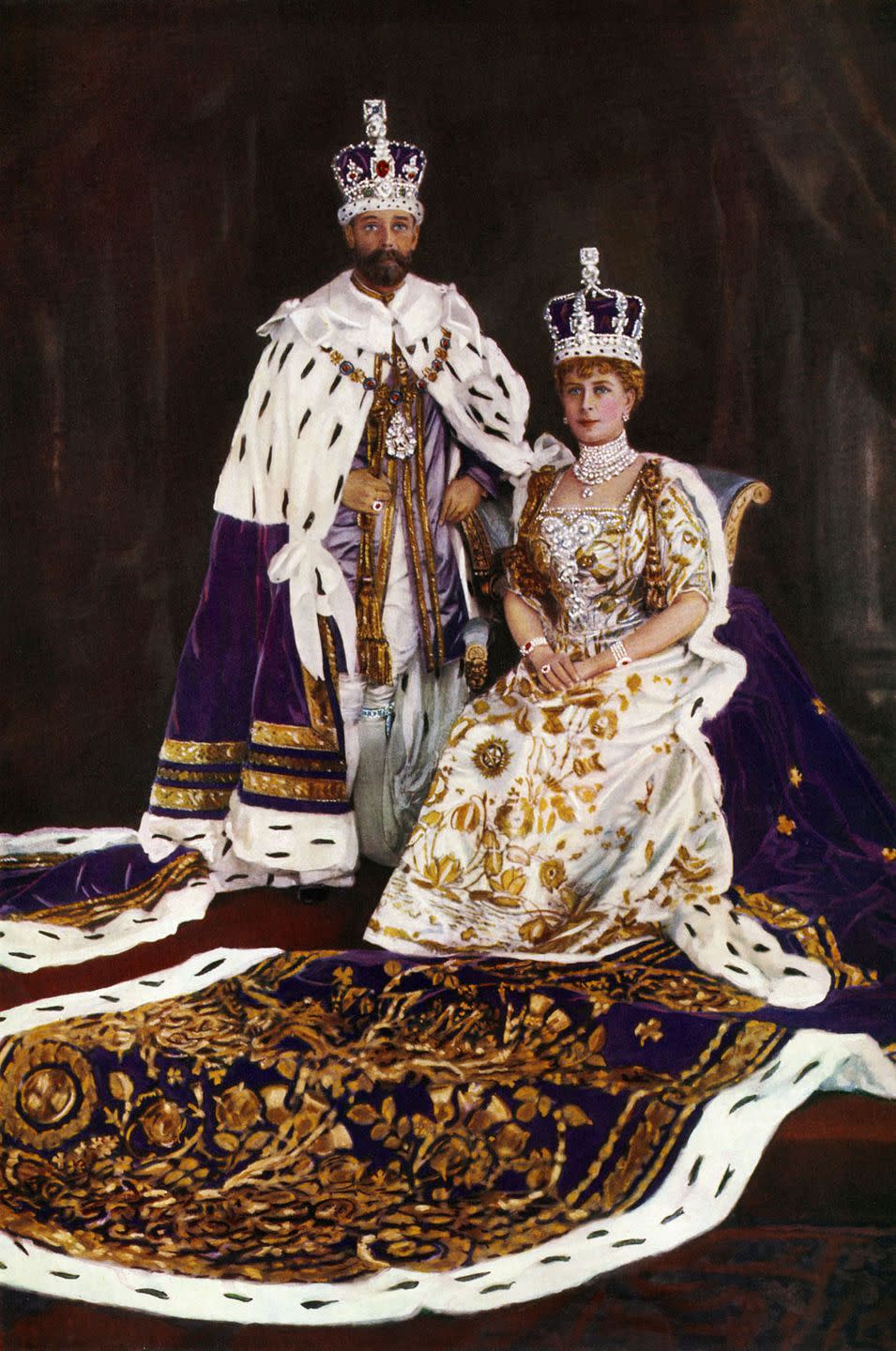
Mary adapted to the simple tastes of her husband and to the difficult demands of her in-laws. England's Queen Alexandra smothered George and criticized Mary. Her adoring letters to her son make startling reading today. “With a great big kiss for your lovely little face,” she wrote George when he was a naval officer. He called her “Motherdear” and never seems to have craved an emotional boundary. After he married, it was his mother, not his wife, who picked out all the furniture for “York Cottage,” the house George and Mary, who had six children, lived in for 33 years. But Mary devoted herself to her husband and supported him however she could.
A faithful husband, George was obsessed with stamp collecting and shooting birds. Even after his father died in 1910, the year after the family summit, and he became King of England, he was a passionate hunter. In 1913, a party led by George V killed 3,937 birds in a single day. Rather than gamble, consume nine-course meals, and chase women, as his father did, George, shy and conservative, preferred the life of a country gentleman.
This is something Czar Nicholas doubtless empathized with. To some, the Romanovs personified wealth and privilege, with their palaces, art collections, and Faberge eggs. But recent biographies have taken a closer look at the complex man who was Nicholas II and come away with a different perspective.
“There was an ascetic aspect in Nicholas’s character, and even on winter nights he left the windows open," historian Robert Service wrote in his book The Last of the Tsars. "He loved the fresh air in any season and spent at least two hours in daily exercise out of doors—four if he had the chance. The emperor, mild of manner, was tough as old boots. He was indifferent to luxury. When in civilian dress, he wore the same suit he had used since his bachelor days. His trousers were on the scruffy side and his boots were dilapidated. For food, he favored simple Russian dishes like beetroot soup, cabbage soup, or porridge….”
The Isle of Wight visit may have called for grander meals than Nicholas liked and more family demands than Alexandra could easily cope with. But they were clearly glad they came. “They left, to our great regret,” Mary wrote to her absent son Bertie, the future George VI, who was in bed with whooping cough and had to miss it all.
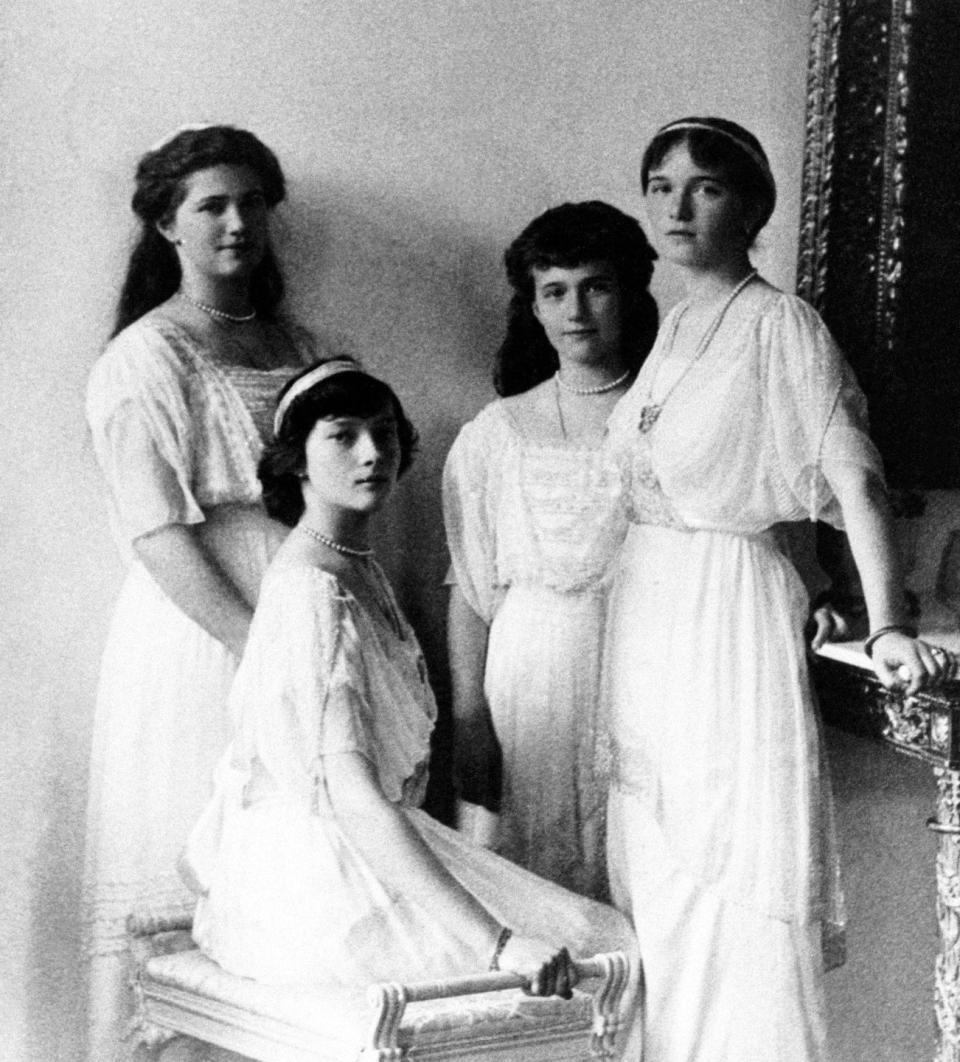
George and Nicholas saw each other one more time. They both attended the wedding of Kaiser Wilhelm’s daughter in 1913 in Berlin. Neither of them much liked Wilhelm, and their countries were formally allied against Germany. But Wilhem was the grandson of Queen Victoria. Family was family.
Five years almost to the day that the Standart anchored off England, certain family connections crumbled forever. World War I broke out. "The lamps are going out all over Europe, we shall not see them lit again in our lifetime," British Foreign Secretary Sir Edward Grey remarked on the eve of their entry into war on the side of Russia. It was a war that inflicted untold horrors on both countries.
King George V was deeply distressed when he heard that the Russian Revolution led Nicholas to abdicate in 1917 and the family to be placed under house arrest. Proposals were floated for the Russian royals to go into exile and settle in England. However, the invitation was later withdrawn. The Romanovs were forced to go to Siberia, and there they died. Even had the invitation not been withdrawn, historians agree that it’s doubtful the Bolsheviks would ever have allowed Nicholas to leave Russia.
It was long assumed that the British government had overruled George V, who was a constitutional monarch. But papers released in the 1980s showed that it was George himself—fearing that the British monarchy was losing support—who felt he could not take the risk of welcoming to England a man whom the public decried as a blood-stained tyrant. His friendship gave way to the needs of the Windsors. It is highly unlikely he thought a firing squad awaited his cousin. Nonetheless, it is a sensitive subject in the royal family to this day.
In 2018, a century after the murder of the Romanovs, a commemorative monument was unveiled on the Isle of Wight in East Cowes, close to Osborne House. Its organizer, David Hill, said to the BBC, "History hasn't always portrayed him well, but we thought it was important history is remembered and that the Tsar was recognised here in Cowes where he spent happy times."
The monument stands tall, not too far from where the four Romanov sisters gathered shells and bought postcards, and where two men so alike they were mistaken for twins linked arms and posed for the camera.
You Might Also Like